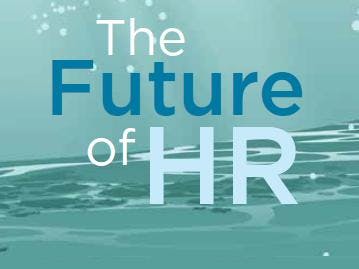In its report The Future of Work: A Journey to 2022, PwC drops an intriguing prediction: By 2018, it says, analysts will attend a presentation by a Fortune 500 “Chief Performance Officer,” who combines the HR and Finance functions.
It seems an odd combination. After all, Finance and HR are distinctly different functions within an organization.
Indeed, they couldn’t be more opposite: Finance worries about the numbers, the margin, the stock price. HR worries about, well, the people.
But times are changing. More and more, companies are mining data to tease out intelligence about everything from customer behavior to employee performance. They’re using analytics not just to forecast financial results but to identify effective employees before they’re hired or chart the impact training can have on sales.
Where once HR professionals were expected to be experts on policies and organizational psychology, now their ability to use numbers is becoming increasingly important.
And numbers — metrics — are the language of the Chief Performance Officer.
Who is the CPO?
The idea of a Chief Performance Officer gained notoriety in 2009, when President Obama created the role within the Office of Management and Budget. Basically, the CPO takes an organization-wide view of performance, developing measurements to gauge the results of various units, working with stakeholders to improve them, and reporting on performance to the organization’s chief executive.
Anthony Politano, who is largely credited with popularizing the idea of a CPO, describes the role in terms of “six Cs:”
- Collecting, consolidating and condensing performance-related data;
- Communicating the results;
- Collaborating with others in the organization; and,
- Controlling the process.
In essence, the CPO becomes the go-to person for issues related to an organization’s performance in all aspects of its operation.
In a separate report — Finance Matters: Finance Function of the Future — PwC predicts the CFO’s role will morph to encompass a Chief Performance Officer’s responsibilities. Where previously, the CFO’s job was about “putting business skills into finance,” it will become one of putting “finance skills into the business.” That means taking a more hands-on approach to concerns beyond the financial. Any area that materially impacts a company’s performance becomes fair game for the CPO.
How HR fits
PwC’s Future of Work report describes three possible types of corporate worlds:
- The Orange, where companies evolve into “collaboration networks;”
- The Green, where social responsibility dominates; and,
- The Blue, where big companies grow bigger and the pressure to perform is “relentless.”
In the Blue World, metrics are used to break down staffing strategies into thousands of skill sets. Screening and monitoring become ubiquitous. “The management of people within the Blue World is a hard business discipline, akin to finance within this scenario,” PwC says.
It’s in this world — where decisions are based on data, and data is used to monitor everything from an employee’s performance to the state of their health — that HR is likely to be swept into the same bucket as Finance. It’s another indication that data is more and more playing a central role in talent management.
The idea of data becoming a driving force behind HR isn’t new anymore. Already some employers use analytics to determine which candidates will best fit into call-center and front-line sales operations, while others use them to identify employees who may be flight risks.
Though compared to other areas of the organization HR has been slow to adopt Big Data, that’s changing. In 2013, Deloitte reported that 57 percent of HR departments increased their spending on analytics.
Data is a strategic issue for HR
The use of data by HR is becoming a strategic issue, says Scott N. Olsen, a principal at PwC. He points out that 70 percent of U.S. CEOs are concerned about finding the talent with the right skills, while 58 percent of CEOs globally worry about rising labor costs in high growth markets.
“Both of these statistics point to the need to better integrate global workforce planning with financial planning and growth priorities,” he says.
Essentially, then, two trends are coming together: the growing use of analytics by HR and a focus on “performance” that’s becoming laser-like. For HR professionals, the ability to understand and interpret data is sure to become as important as their ability to appreciate the company’s culture and recognize the technical needs of its hiring managers.
